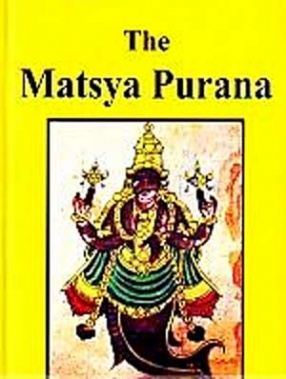
The original Center for Cognitive Therapy at Penn served as an important training ground for cognitive behavior therapists. In 1994, they established the Beck Institute at its present site in Bala Cynwyd, in suburban Philadelphia. Still, and his daughter,, had long wished to establish a new clinical setting that would provide state-of-the-art psychotherapy and training opportunities for professionals worldwide and at all levels. Ekzamenacionnie bileti voprosi i otveti operatora gazovoj koteljnoj. Beck developed Cognitive Therapy (CT), also known as, in the 1960s.
Matsya Purana: Part of a series on . Language: English. Matsya Purana (literally, the ancient chronicle of Matsya) is one of the oldest of the 18.
Kurma Purana The Purana (IAST: KūrmaPurāṇa) is one of the eighteen Mahapuranas, and a medieval era Vaishnavism text of Hinduism. The text is named after the tortoise avatar of Vishnu. The manuscripts of Purana have survived into the modern era in many versions. The number of chapters vary with regional manuscripts, and the critical edition of the Purana has 95 chapters. Download windows 98 plus themes for windows xp. Tradition believes that the Purana text had 17,000 verses, the extant manuscripts have about 6,000 verses. The text, states Ludo Rocher, is the most interesting of all the Puranas in its discussion of religious ideas, because while it is a Vaishnavism text, Vishnu does not dominate the text. Instead, the text covers and expresses reverence for Vishnu, Shiva and Shakti with equal enthusiasm.
The Purana, like other Puranas, includes legends, mythology, geography, (pilgrimage), theology and a philosophical Gita. The notable aspect of its Gita, also called the Ishvara Gita, is that it is Shiva who presents ideas similar to those found in the Bhagavad Gita. The original core of the text may have been composed about the start of the 8th-century CE, and revised thereafter over the centuries.
The Purana, like all Puranas, has a complicated chronology. Dimmitt and van Buitenen state that each of the Puranas is encyclopedic in style, and it is difficult to ascertain when, where, why and by whom these were written: As they exist today, the Puranas are a stratified literature. Each titled work consists of material that has grown by numerous accretions in successive historical eras. Thus no Purana has a single date of composition. (.) It is as if they were libraries to which new volumes have been continuously added, not necessarily at the end of the shelf, but randomly. The Purana exists in many versions, but all of them consist of two parts - the Purva-vibhaga (older part) and Upari-vibhaga (upper part). The number of chapters vary with the manuscripts. The critical edition of the different manuscripts contains fifty one chapters in Purva-vibhaga and forty four in Upari-vibhaga. The Padma Purana categorizes Purana as a Tamas Purana. Scholars consider the Sattva-Rajas-Tamas classification as 'entirely fanciful' and there is nothing in this text that actually justifies this classification.
Click on the links below for the 4 volumes of Kannada translation of Kurma Purana with original Sanskrit Shlokas, published in 1946. This Purana was digitized through Sriranga Digital Technologies by Shri Yogananda, Professor of Mathematics, at Shri Jayachamarajendra College of Engineering, Mysore. • • • • Click on the links below for the English translation of Kurma Purana, published in 1951 by Motilal Banarsidass Publishers, in 2 Volumes. In order to reduce the size of the files, each volume is divided into 4 parts. • • • • • English Purana-Volume 1-Part 3 • English Purana-Volume 1-Part 4 • English Purana-Volume 1-Part 5 • English Purana-Volume 2-Title page • English Purana-Volume 2-Content page • English Purana-Volume 2-Part 1 • English Purana-Volume 2-Part 2 • English Purana-Volume 2-Part 3 • English Purana-Volume 2-Part 4.